Recent Articles
Popular Makes
Body Types
10 Cars That Depreciate the Least
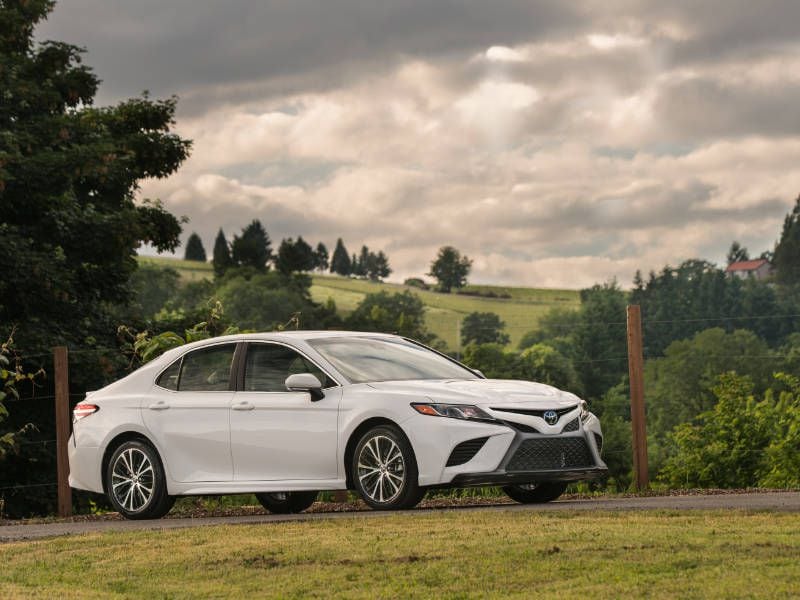
2018 Toyota Camry XSE hero ・ Photo by Toyota
Nearly all vehicles start to depreciate the moment they leave the dealership, but the differences between the cars that lose the least value and those that depreciate the most can be surprising. For instance, while the average new vehicle will fall in value by about 20 percent after its first year on the road, others can easily see depreciation rates that are twice that high — or higher.
If you typically rely on a trade-in when purchasing a new vehicle, this difference will have a noticeable impact the next time you go shopping. What’s not always obvious is which current cars are the best bets for holding onto their value. After surveying the top online resources for vehicle de-valuation data, we’ve found some unexpected choices for today’s gallery.
2018 BMW M3
Our list of cars that depreciate the least includes many 2018 models. For those vehicles, which are just entering the marketplace, we’re projecting low depreciation rates based on a combination of history and new improvements.
Consider the 2018 BMW M3. The high-performance sibling of the 3 Series sport sedan, the M3 already showcased a 425-horsepower turbocharged six-cylinder engine; heated 10-way power-adjustable sport seats; and a 600-watt Harman Kardon audio system. But BMW nonetheless welcomes more technology for 2018, from LED headlights to an iDrive 6.0 infotainment system that complements a controller-knob interface with new touchscreen capability. The Competition Package also unveils a sinister new “Style 666 M” 20-inch wheel design.
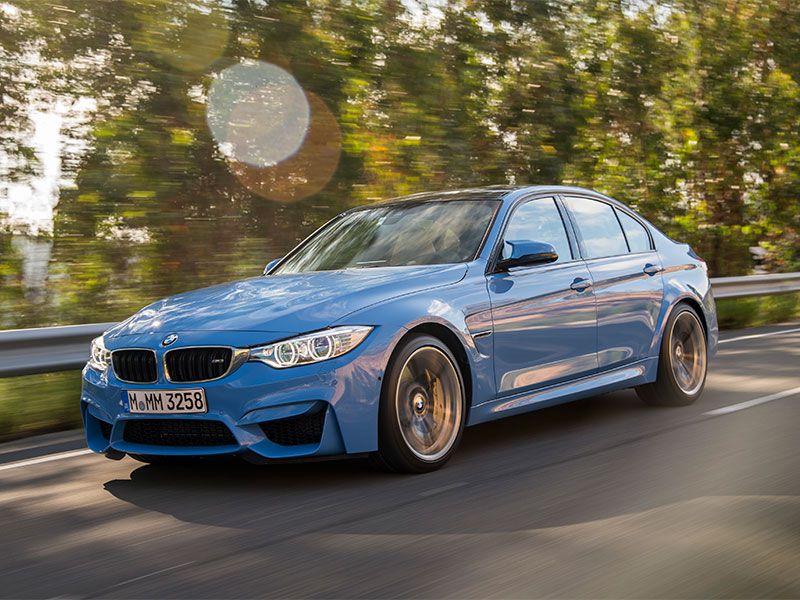
Photo by BMW
2018 Subaru WRX
It’s probably no surprise that Subaru offers many cars with low depreciation rates. The brand, after all, is more popular than ever in the United States, and that sizzling demand is an excellent way to support value. The model that seems to get the most love from the experts isn’t one of the automaker’s top-selling SUVs. It’s the WRX sport compact.
Slotted between the standard Impreza and ultra-high-performance WRX STI, the 2018 Subaru WRX has just debuted with refreshed styling, an upgraded cabin and enhanced technologies like a head-up display for its available EyeSight safety package. And naturally, the car’s 268-horsepower turbo engine, standard symmetrical all-wheel drive, and optional Recaro seats remain on the menu.
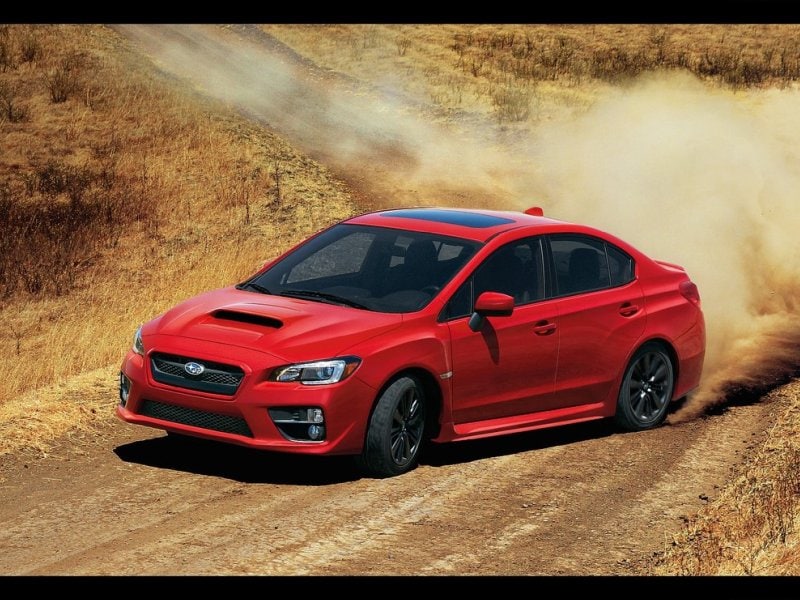
Photo by Subaru
2018 Subaru Legacy
Another of the recently refreshed cars that depreciate the least is likely to be the 2018 Subaru Legacy. Again, like the WRX, the midsize Legacy sedan has a long history of holding its value, while it also benefits from significant updates for the new model year. Among the highlights are new, more athletic-looking front and rear fascias, along with a variety of impressive technologies.
As a starting point, the latest Android Auto/Apple CarPlay smartphone integration has become standard, thanks to improvements to the Legacy’s infotainment systems, and Subaru also has introduced steering-responsive LED headlights as a new driver-assistance feature. Additionally making their debut for the Legacy are signature LED daytime running lights and a re-tuned, smoother-riding suspension.

Photo by Subaru
2017 Porsche 718 Cayman
For enthusiasts, the sports cars that depreciate the least also include the 2017 Porsche 718 Cayman. Redesigned for 2017, and now honoring the Porsche 718 race car from the late 1950s and early 1960s, the Cayman offers two revised turbo engines to help it live up to its new name.
The standard unit delivers 300 horsepower, a top speed of 170 mph and 0-60 times as low as 4.5 seconds; the 350-horsepower optional engine is good for a terminal velocity of 177 mph, and it can push the car from 0-60 in a mere 4 seconds flat. Also worth noting is that, regardless of which power plant you choose, the Cayman carries its motivation in an exotic mid-engine layout.
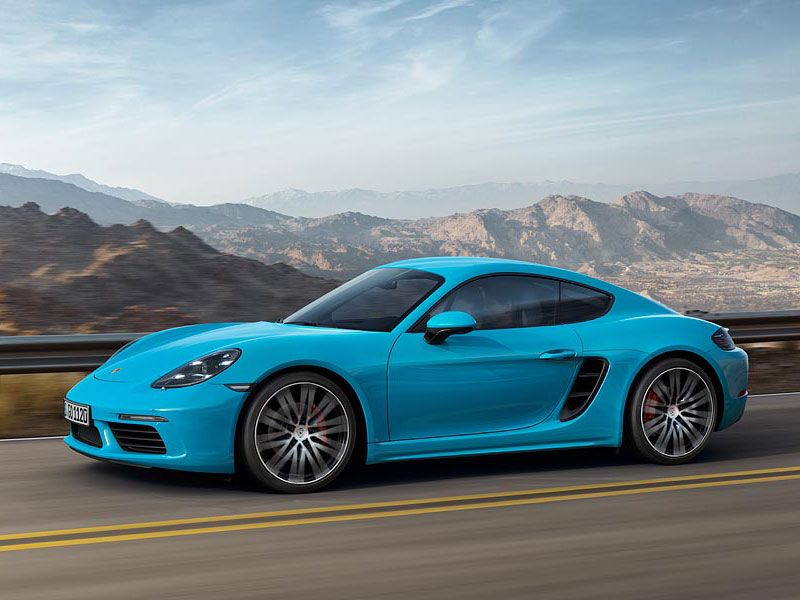
Photo by Porsche
2017 Porsche 911
Nor is the Cayman the only Porsche among our cars with low depreciation rates. The brand’s rear-engined sports-car icon — represented here by the 2017 Porsche 911 — continues to match its incredible performance capabilities with equally strong resale value.
Oh, and on the topic of strength, the latest 911 roster has plenty of it. For 2017, the 911 Carrera and Carrera S come with standard six-cylinder turbocharged engines that produce 20 more horsepower than their 2016 counterparts — new outputs of 370 and 420 horses, respectively. The Carrera S also lowers its 0-60 times to a blistering 3.7 seconds, and both cars raise the bar for standard infotainment technology: handwriting recognition, Apple CarPlay and a 7-inch touchscreen are all in the mix.
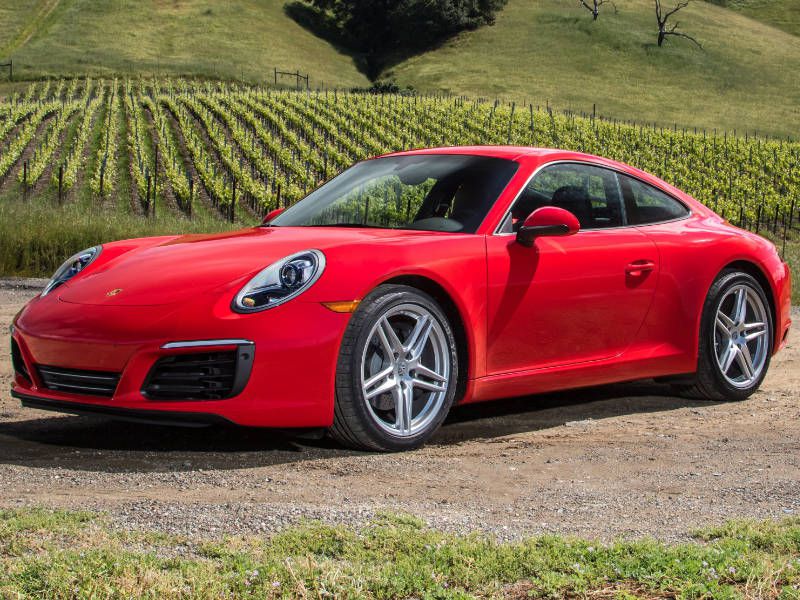
Photo by Porsche
2017 Porsche Panamera
Then, with the inclusion of the 2017 Porsche Panamera, Porsche leads all brands with the most choices in our gallery of cars that depreciate the least. The Panamera is the automaker’s range-topping sport sedan, and like both the Cayman and the 911, it has been redesigned for 2017.
Key new features launching for the Panamera this year are its first eight-speed dual-clutch automatic transmission, twin-turbo V6 and V8 engines, dual driver information readouts, a night-vision system, and the Porsche InnoDrive safety package. This latter setup combines LED matrix headlights, adaptive cruise control and an advanced lane-departure warning system with road-sign recognition capability. The Panamera appeals to infotainment lovers, too, with a cutting-edge PCM infotainment system and Apple CarPlay smartphone integration.
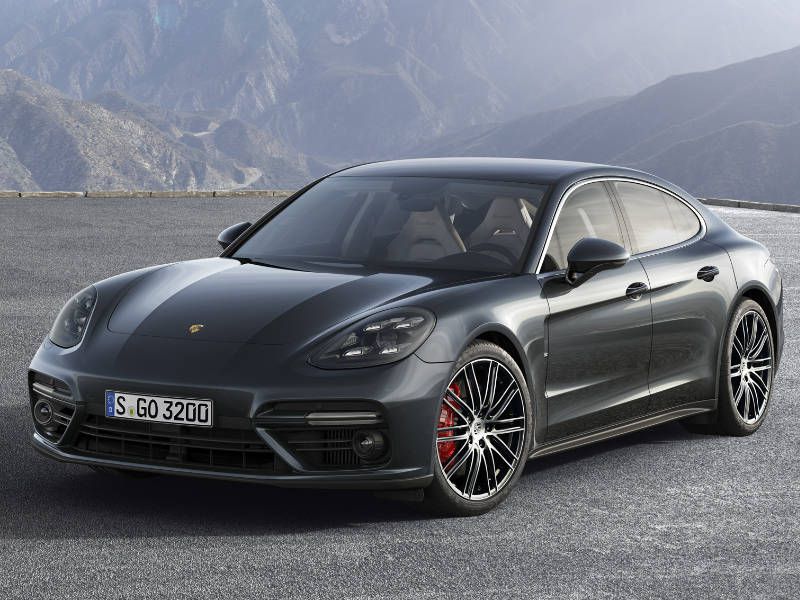
Photo by Porsche
2018 Ford Mustang
If you’re shopping for the muscle cars that depreciate the least, the 2018 Ford Mustang is a good bet. Recent models — especially the Shelby versions — have earned their share of third-party kudos for retained value, and the Blue Oval has refreshed the lineup once more for the new selling season. There’s a more aggressive and more streamlined look for all Mustangs, as well as available cutting-edge technologies such as a 12-inch all-digital instrument panel.
Ford also ramps up driver-assistance tech in the 2018 Mustang, introducing a pre-collision system, pedestrian detection, lane-departure warning, lane-keeping assistance and more. Nor has the company forgotten to increase performance, as the upcoming Mustang GT is expected to carry the model's highest-revving and most powerful V8 ever.
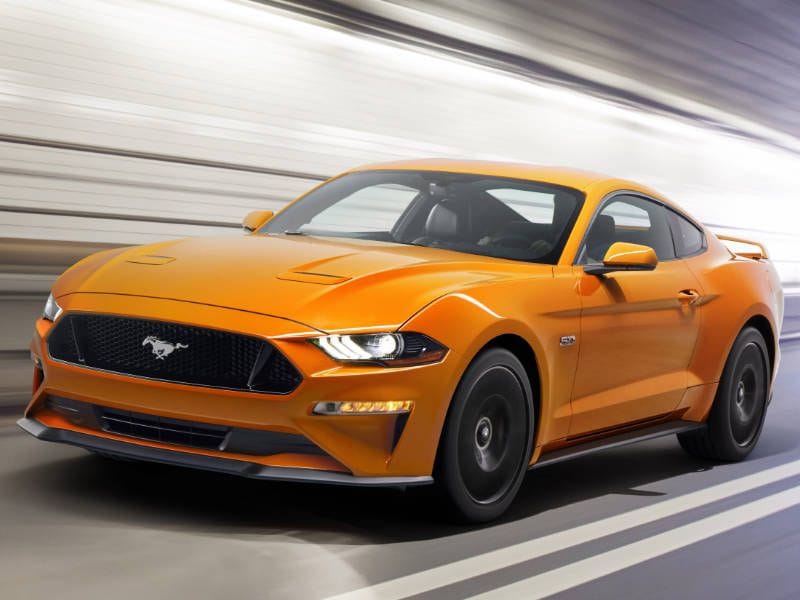
Photo by Ford
2018 Honda Fit
Standing out from the smaller cars that depreciate the least is the 2018 Honda Fit. A subcompact hatchback with a particularly versatile and roomy cabin, the Fit wears a dynamic new design and arrives in dealerships with some of the industry’s most in-demand technologies. First, for enhanced connectivity, customers can order the Fit with an upgraded infotainment system that bundles a 7-inch touchscreen plus Android Auto/Apple CarPlay smartphone integration.
To bolster driver-assistance content, the car can then supply a full Honda Sensing safety suite with adaptive cruise control, collision-mitigation braking, forward collision warning, lane-keeping assistance, lane-departure warning and road-departure mitigation. (Just to be clear, the fuel-efficient Fit comes standard with a multi-angle rearview camera, too.)
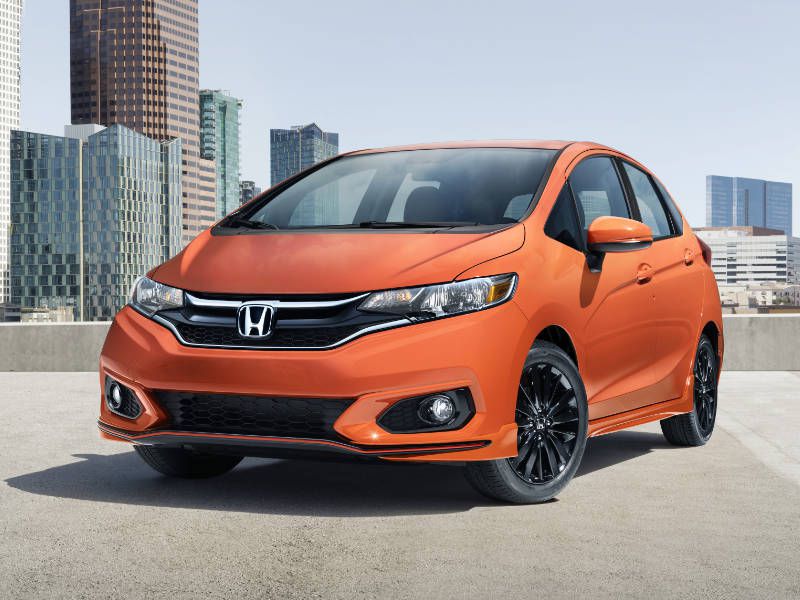
Photo by Honda
2018 Toyota Camry
The cars that depreciate the least often start with the most standard equipment, and that’s a big advantage for the 2018 Toyota Camry. That’s because this all-new mid-size sedan will benefit from Toyota’s recent program to boost standard safety content across the lineup. In the Camry specifically, this means all trims will be configured with a Safety Sense P bundle that incorporates a pre-collision system, pedestrian detection, adaptive cruise control, lane-departure warning, lane-keeping assistance and automatic high beams.
A rearview camera, of course, also is also standard, and optional tech resources extend to rear cross-traffic braking and alert system and a blind-spot monitor. Furthermore, with its new Entune 3.0 infotainment system, the Camry also joins the mobile Wi-Fi club.

Photo by Toyota
2018 Honda Accord
We also project the brand-new 2018 Honda Accord as one of our cars with low depreciation rates. It’s certainly a car with high levels of technology on the menu: Android Auto, Apple CarPlay, and a mobile Wi-Fi hotspot are all here for infotainment purposes, while a wide array of Honda Sensing driving-assistance features is standard.
The redesigned Accord also premieres with premium tech cues such as a 7-inch digital instrument panel and a head-up display. Even the car’s powertrain family is new, as drivers can choose from two turbocharged four-cylinder engines or a third-generation two-motor hybrid propulsion system. All choices are fun to drive and fuel-efficient, with the range-topping turbo also mated to a new 10-speed automatic transmission.
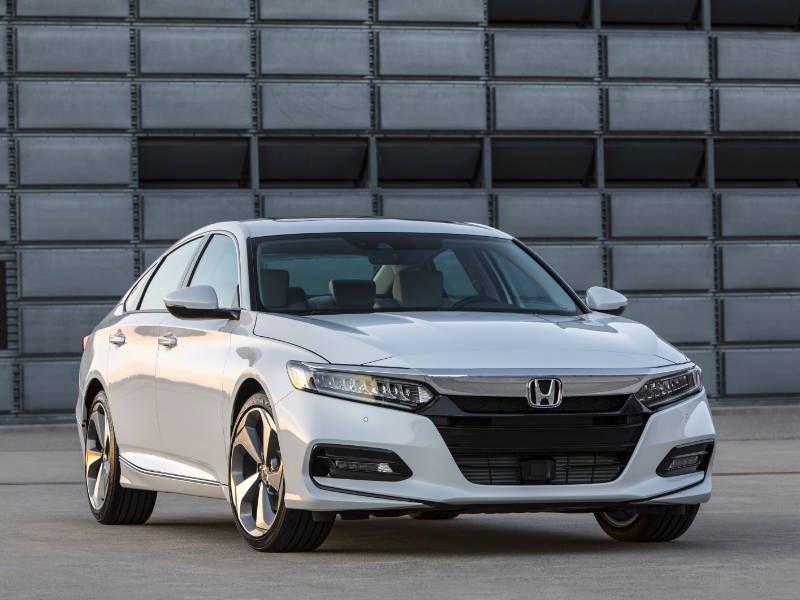
Photo by Honda